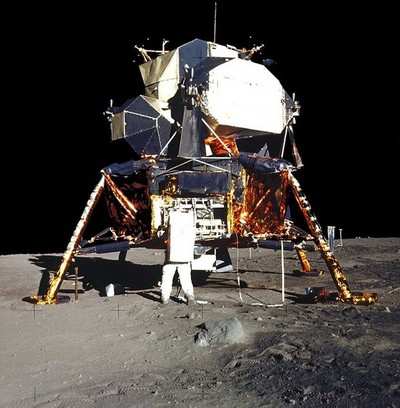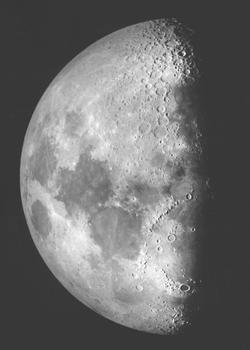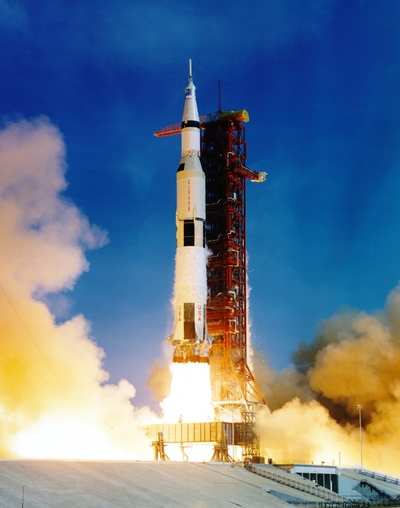$30 Million Purse To Be Awarded To Winners
ANN REALTIME REPORTING 09.13.07 1400 EDT: It's
BIG money... for a big goal. Moments ago, ANN's Aero-TV News
Team covered the X Prize Foundation and Google
announcement of the Google Lunar X Prize, a robotic race to
the Moon to win a share of a $30 million Prize purse.

Private companies from around the world will compete to land a
privately funded robotic rover on the Moon that is capable of
completing several mission objectives, including roaming the lunar
surface for at least 500 meters and sending video, images and data
back to the Earth.
The Google Lunar X Prize is an unprecedented international
competition that will challenge and inspire engineers and
entrepreneurs from around the world to develop low-cost methods of
robotic space exploration. The X Prize Foundation, best known for
the $10 million Ansari X Prize for private suborbital spaceflight,
is an educational nonprofit Prize organization whose goal is to
bring about radical breakthroughs to solve some of the greatest
challenges facing the world today.
"The Google Lunar X Prize calls on entrepreneurs, engineers and
visionaries from around the world to return us to the lunar surface
and explore this environment for the benefit of all humanity," said
Dr. Peter H. Diamandis, Chairman and CEO of the X Prize Foundation.
"We are confident that teams from around the world will help
develop new robotic and virtual presence technology, which will
dramatically reduce the cost of space exploration."

"Having Google fund the purse and title the competition
punctuates our desire for breakthrough approaches and global
participation," continued Diamandis. "By working with the Google
team, we look forward to bringing this historic private space race
into every home and classroom. We hope to ignite the imagination of
children around the world."
In the 1960s, the United States and the Soviet Union engaged in
a historic superpower Moon race, which culminated in 12 men
exploring the surface of the Moon. The first era of lunar
exploration reached a dramatic conclusion in December 1972, as
Apollo 17 Astronauts Captain Gene Cernan and Dr. Harrison Schmitt
became the last men on the Moon.

Moon 2.0, the second era of lunar exploration, will not be a
quest for "flags and footprints." This time... we will go to the
Moon to stay.
The Moon is a stepping stone to the rest of the solar system and
a source of solutions to some of the most pressing environmental
problems that we face on Earth - energy independence and climate
change. Already, governments from around the world recognize the
importance of lunar exploration, and national space agencies from
the United States, Russia, China, India, Japan, and the nations of
Europe plan to send probes to the Moon in the coming decade.
Today, the frontier of private enterprise is the halo of
communications satellites in geostationary orbit 24,000 miles above
our planet. The Google Lunar X Prize now challenges private
enterprise to reach 10 times beyond its present limits to
participate in this great exploration adventure.
About the Prize Purse
 The $30 million Prize
purse is segmented into a $20 million Grand Prize, a $5 million
Second Prize and $5 million in bonus Prizes. To win the Grand
Prize, a team must successfully soft land a privately funded
spacecraft on the Moon, rove on the lunar surface for a minimum of
500 meters, and transmit a specific set of video, images and data
back to the Earth.
The $30 million Prize
purse is segmented into a $20 million Grand Prize, a $5 million
Second Prize and $5 million in bonus Prizes. To win the Grand
Prize, a team must successfully soft land a privately funded
spacecraft on the Moon, rove on the lunar surface for a minimum of
500 meters, and transmit a specific set of video, images and data
back to the Earth.
The Grand Prize is $20 million until December 31, 2012;
thereafter it will drop to $15 million until December 31, 2014 at
which point the competition will be terminated unless extended by
Google and the X Prize Foundation.
To win the Second Prize, a team must land their spacecraft on
the Moon, rove and transmit data back to Earth. Second place will
be available until December 31, 2014 at which point the competition
will be terminated unless extended by Google and the X Prize
Foundation.
Bonus Prizes will be won by successfully completing additional
mission tasks such as roving longer distances (less than 5,000
meters), imaging man made artifacts (e.g. Apollo hardware),
discovering water ice, and/or surviving through a frigid lunar
night (approximately 14.5 Earth days). The competing lunar
spacecraft will be equipped with high-definition video and still
cameras, and will send images and data to Earth, which the public
will be able to view on the Google Lunar X Prize website.
Why the Moon?
In a recent Gallup poll, more than two-thirds of Americans (68%)
supported a return to the Moon, and further missions to points
beyond. Some practical benefits to lunar exploration include:
- Enabling exploration of the solar system and
beyond. Space exploration is expensive because every ounce
of propellant and spacecraft must be launched out of the Earth's
strong gravity field. A natural storehouse of materials, lunar soil
is more than 40% oxygen by weight and oxygen makes up most of the
mass of rocket propellant. Because of its shallower gravity well,
the Moon is the stepping stone to the universe.
- The Moon can help save the Earth. For more
than 30 years, NASA and the US Department of Energy have
experimented with ways to capture abundant clean solar energy in
space for use on Earth. Although the technology for doing this is
well understood, the high cost of launching materials out of the
Earth's deep gravity well has prevented the implementation of these
systems. However, if lunar material is used for space construction,
clean energy could be supplied on a 24-hour basis without carbon
dioxide or other hazards to the biosphere.
- We can learn about the Earth's geologic past.
Thanks to the Moon rocks and other information returned by Apollo
astronauts, scientists now believe that the Moon was created by a
collision between a planet-sized object and the early Earth. By
exploring our nearest neighbor we are also exploring a remnant of
ancient Earth.
- We can see more deeply into space. The Moon
provides a large stable platform for astronomical observation
unhindered by atmosphere. The far side of the Moon is the one
"quiet" place in the Solar System that is shielded from the Earth's
cacophony of radio, television and data broadcasts. The body of the
Moon itself provides this shielding, and a radio telescope on the
lunar far side can detect energy from the beginning of the
universe.
- Driving new technologies and devices. The Moon
may be the most hostile environment we face in the near future.
Surviving and exploring will require major advances in technology.
Many of those technologies will also have practical use back
home.

Strategic Alliances
Strategic alliances that support this new competition
include:
- Space Exploration Technologies (SpaceX), run
by entrepreneur and X Prize Foundation Trustee Elon Musk, which is
offering competing teams an in-kind contribution, lowering the cost
of its Falcon Launch Vehicle. SpaceX is the first preferred launch
provider for this competition;
- The Allen Telescope Array (ATA), operated by
the SETI Institute, will serve as a preferred downlink provider for
communications from the Moon to the Earth; operated by SETI, which
will provide downlink services at no cost to competing teams;
- The Saint Louis Science Center serves as the
Foundation's official education partner and the coordinator of an
international network of museums and science centers; and
- The International Space University (ISU),
based in Strasbourg, France, will conduct international team
outreach and facilitate an unbiased judging committee.
ANN, which played a requested role in helping X Prize and Google
make this announcement will have Aero-TV feature programming on
this topic shortly.
 Aero-News: Quote of the Day (04.28.25)
Aero-News: Quote of the Day (04.28.25) ANN's Daily Aero-Term (04.28.25): Decision Altitude (DA)
ANN's Daily Aero-Term (04.28.25): Decision Altitude (DA) ANN's Daily Aero-Linx (04.28.25)
ANN's Daily Aero-Linx (04.28.25) Airborne-Flight Training 04.24.25: GA Refocused, Seminole/Epic, WestJet v TFWP
Airborne-Flight Training 04.24.25: GA Refocused, Seminole/Epic, WestJet v TFWP Aero-News: Quote of the Day (04.29.25)
Aero-News: Quote of the Day (04.29.25)







